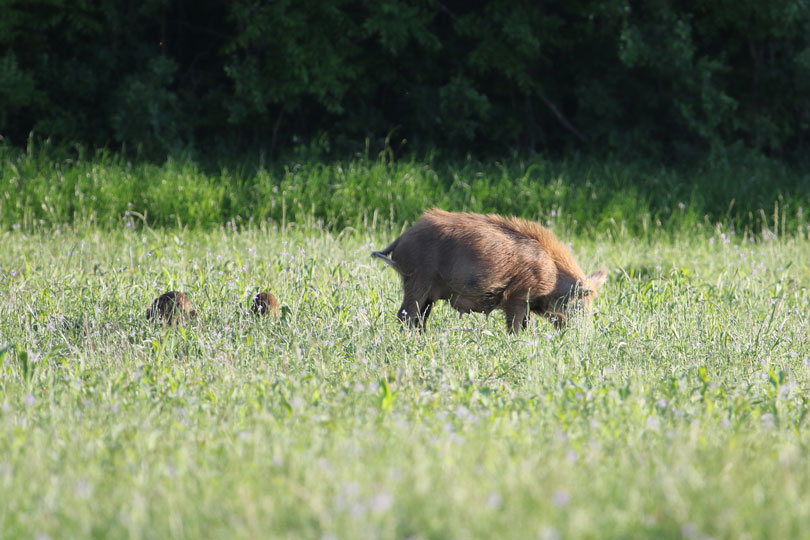The U.S. Department of Agriculture (USDA) announced $75 million in funding is available for the eradication and control of feral swine through a new pilot program.
The program, Feral Swine Eradication and Control Pilot Program, is a joint effort between USDA’s Natural Resources Conservation Service and Animal and Plant Health Inspection Service. The 2018 Farm Bill included this new pilot program to help address the threat that feral swine pose to agriculture, ecosystems and human and animal health.
NRCS will direct up to $33.75 million of the allocated FSCP funds toward partnership efforts to work with landowners in identified pilot projects in targeted areas. Applications are being accepted through Aug. 19 for partners to carry out activities as part of these pilot projects in select areas of Alabama, Arkansas, Florida, Georgia, Louisiana, Mississippi, North Carolina, Oklahoma, South Carolina and Texas. APHIS has determined that these states have among the highest feral swine population densities and associated damages in the country.
“NRCS state conservationists and APHIS state directors, in coordination with state technical committees, have identified pilot projects that can be carried out within these target states,” NRCS Chief Matthew Lohr said. “Our agencies stand ready to work with partners at the state and local level to respond to the threat of feral swine.”
Ten counties in Texas have been identified to participate in the program. They include: Potter, Hartley and Oldham counties along the Canadian River; Eastland, Erath and Comanche along the Leon River; and Hardeman, Wilbarger, Wichita and Clay counties along the Red River.
Pilot projects will consist broadly of three coordinated components: 1) feral swine removal by APHIS; 2) restoration efforts supported by NRCS; and 3) assistance to farmers and ranchers for feral swine control provided through partnership agreements with non-federal partners. Projects can be one to three years in duration.
“The projects selected for funding will allow APHIS and NRCS to collectively reduce the damage and disease caused by one of the most destructive and formidable invasive species in the United States,” APHIS Administrator Kevin Shea said. “Overall, this pilot program builds upon and expands work already underway by APHIS’ National Feral Swine Damage Management Program to both manage feral swine and eliminate populations in partnership with local government, the private sector, industry and academia.”
NRCS is accepting proposals from non-federal partners to provide landowner assistance for on-farm trapping and related services as part of the pilot projects described above. NRCS will provide funding for these services through partnership agreements. The funding limit for a single award is $1.5 million. Awardees will be required to provide at least 25 percent of the partnership agreement budget as a match to NRCS funding.
Additional information on the complete funding announcement and about specific pilot projects, including target areas and the roles for which partner assistance is being requested, can be found on the FSCP webpage.
Applications must be submitted through grants.gov by 5 p.m. ET on Aug. 19.


So Sabine County is not included, as usual. We don’t have as big a population as many other counties, but we have a terrible feral hog problem. We recently had a program of rewards for the hunters who could kill the most hogs. Our hunters are doing their best, but the hog population is growing. They’re very destructive.
Don’t tell me Wilson county does not have a problem. In the past six weeks I personally have killed 101 hogs. They have devastated my hay patch
Sabine County has a bad hog problem. We recently had a program to get rid of some of them. The businesses awarded prizes to the people who could kill the most hogs. Obviously, we can’t do that all the time. Our hunters are doing their best, but the hogs are multiplying faster than they can kill them. I wonder, what criteria was used to choose the 10 counties the money is being given to?
What happened to the sodium nitrite bait program?
Looks to me all of South Texas was left out of the program.
Grimes County should be included. Brucella Suis is active in Grimes.
Why was Coryell County not included?
As long as they allow awarding prizes like guns and money for these feral hog hunting competitions, it does nothing to eradicate the problem for farmers. It only motivates the hunters to keep hog populations in place so that they can compete for prizes.